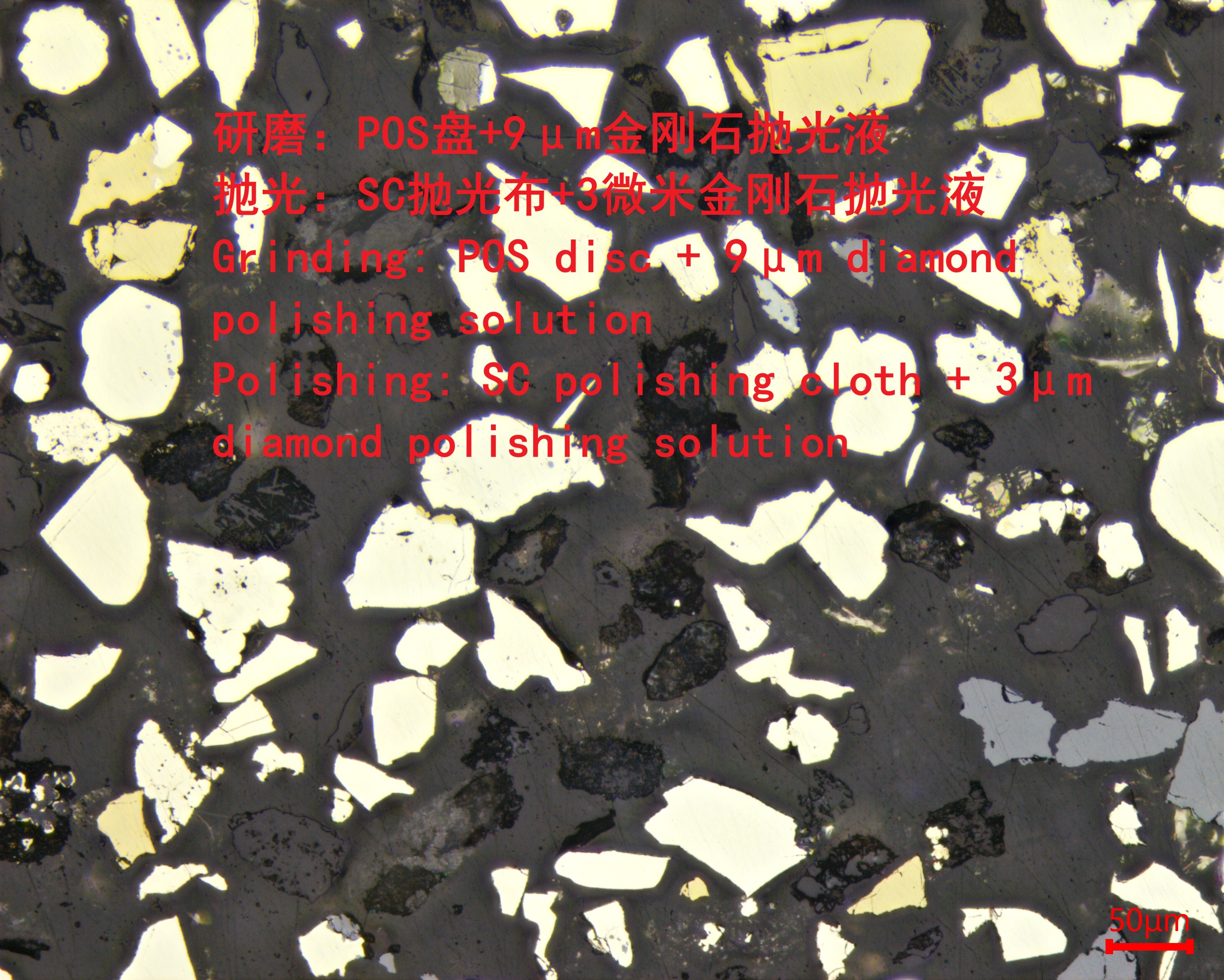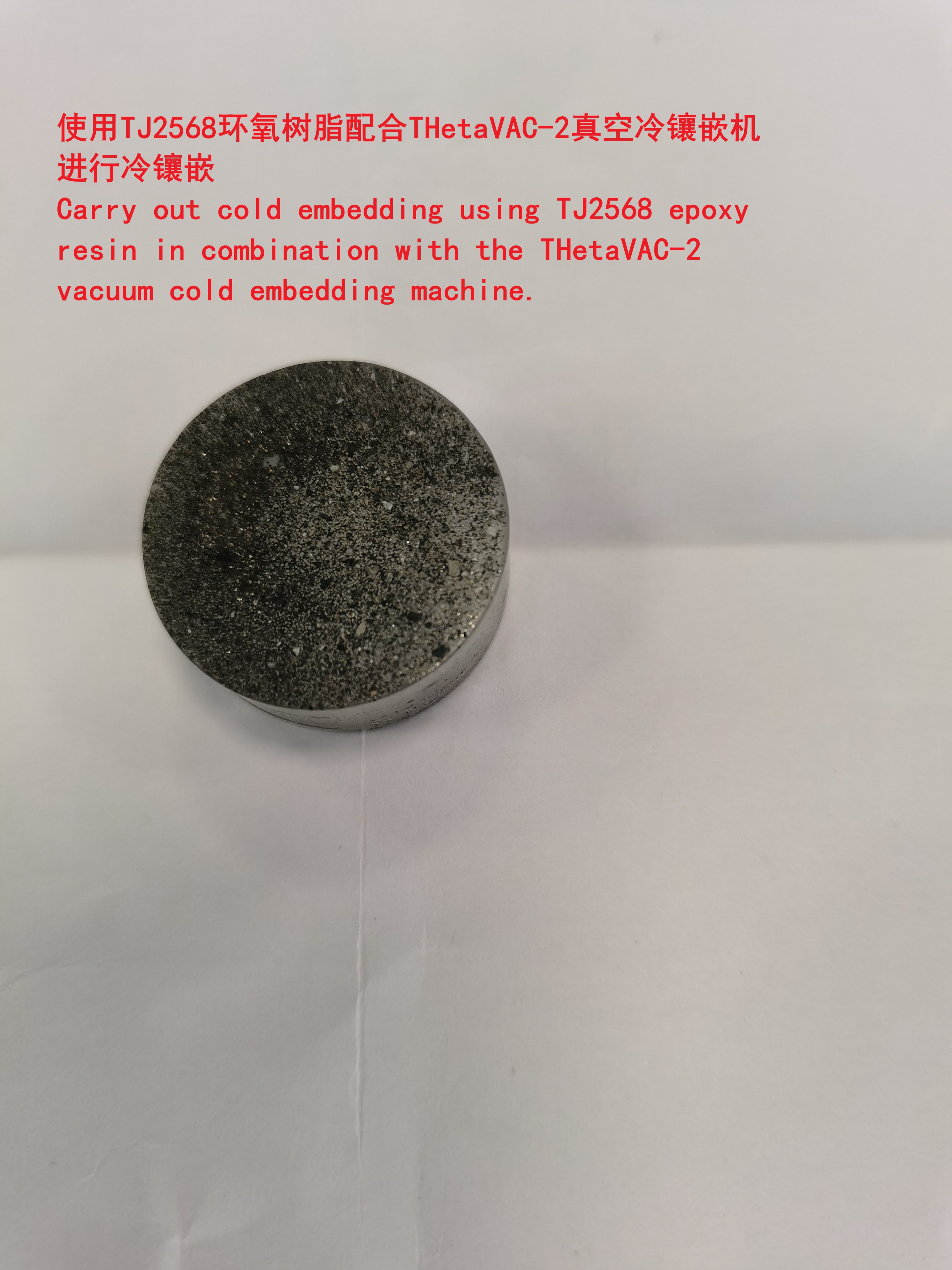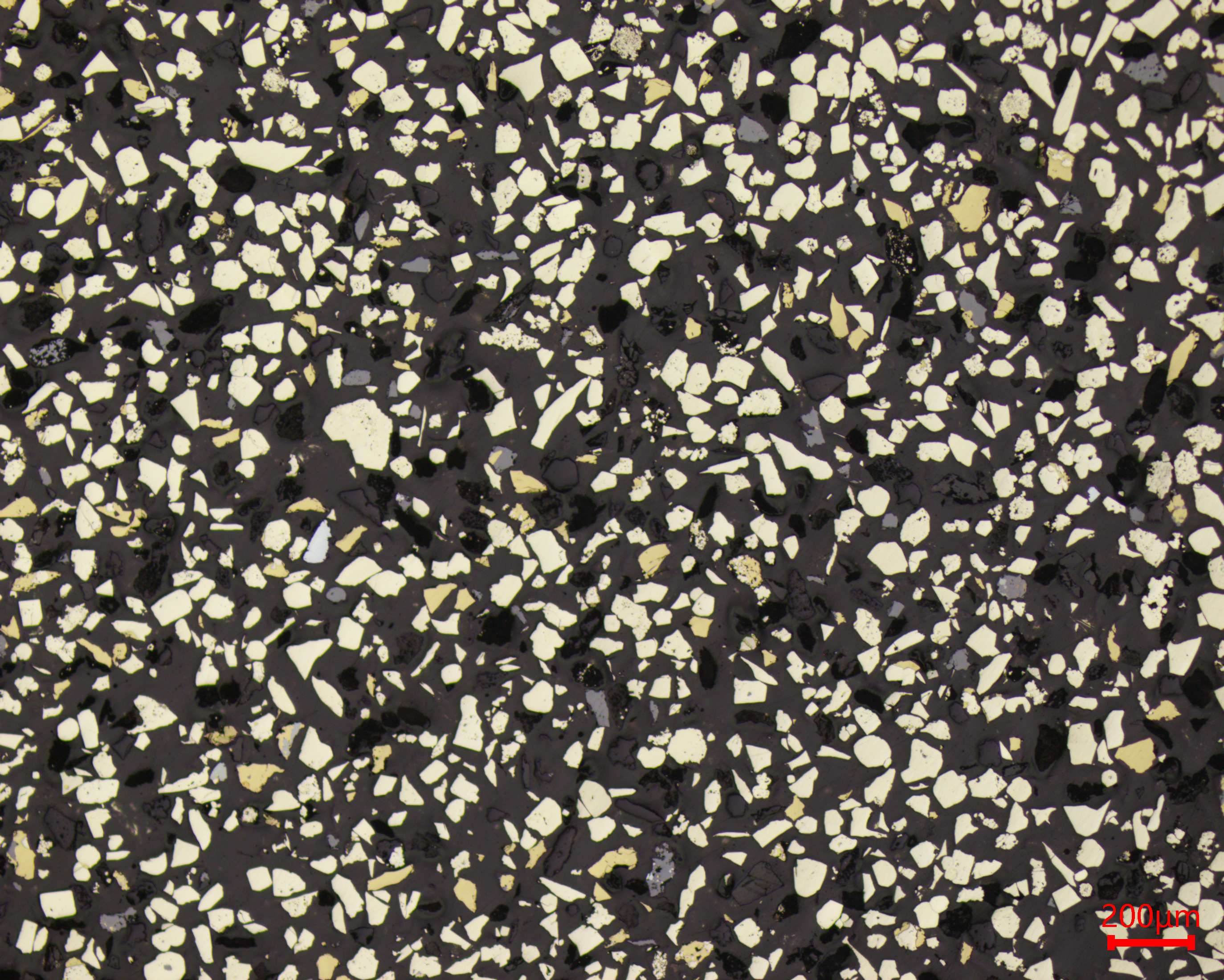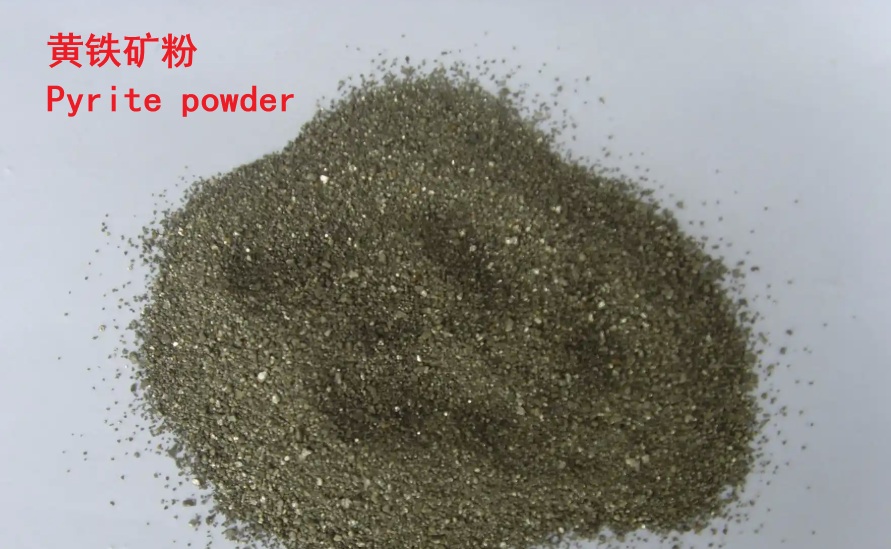Pyrite is a kind of complex sulfide mineral, mainly composed of FeS2, presenting a light brass color. It is often mistaken for gold by people and is thus called "fool's gold". Pyrite is the most widely distributed sulfide in the earth's crust and forms under various geological processes. It can be found in many rocks and ores (including coal seams) and has ornamental value. Industrially, it is used for extracting sulfur and manufacturing sulfuric acid. To determine the particle size of pyrite powder, the following polishing sample preparation is carried out:


Firstly, it is embedded using cold embedding material TJ2568 with edge protection epoxy resin. Then, on the Alpha610 automatic grinding and polishing machine, the sample is prepared through three steps of grinding and polishing. The steps are as follows:
1. Coarse grinding with silicon carbide sandpaper P800 until the surface is flat
2. Coarse polishing with POS disc + 9 micrometer diamond polishing suspension
3. Fine polishing with SC polishing cloth + 3 micrometer diamond polishing suspension
Observation is conducted using the MN80 metallographic microscope. The metallographic photos after polishing show that the white blocks are oxide particles, the yellow blocks are iron disulfide crystals, the gray or black ones are clay minerals, and irregular-sized holes are interspersed in the middle.


 中文简体
中文简体 英语
英语 西班牙语
西班牙语 德语
德语




.jpg?imageView2/2/w/400/format/jpg/q/75)
.jpg?imageView2/2/w/400/format/jpg/q/75)











